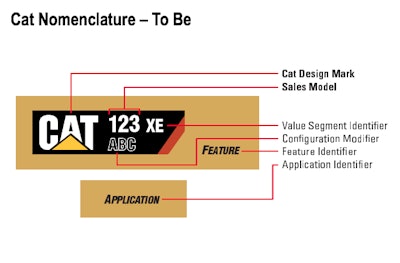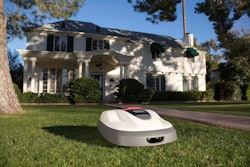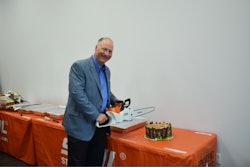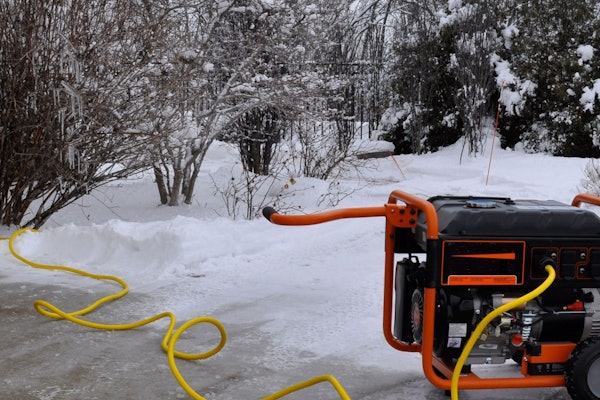
Because of this, Cat is dropping the letter modifier that for so long announced a new generation of Cat products and is replacing it with a “Build Number.” This Build Number will not be in the model name that appears on the side of the machine. It will, however, be spelled out on the Product Information Number plate on the machine and in Caterpillar’s internal and external communications.
Caterpillar is easing into this new system with its 745 articulated truck, announced at ConExpo, and will gradually switch each product line to the new nomenclature as it receives a generational update.
Under Cat’s former nomenclature system, for example, the former 745C would have become the 745D. Instead, the new artic reads “745” on the machine’s side with no letter designation, and the model is known through internal and external communications as the 745 (Build 04), with the “04” representing the fourth generation of the machine.
One exception to the new no-letter system will be Cat’s dozers, which will continue with their current E, K, N and T letter designations (more on that later).
Major shift

“We’ve historically only used 15 letters out of the alphabet to indicate product series, and we’re running out of them on some of our products,” says Stembridge. In addition, product development curves are accelerating, making it apparent that “we needed to come up with a new way of tracking the series of our products,” he says. Cat did not want to start over with the alphabet since it has many legacy parts in its support system.
Instead, Cat is opting to drop the letter (except in dozers), and will just use the model number as the primary identifier on the side of the machine. But in internal and external communications it will refer to the machine with the Build Number in parenthesis. Stembridge emphasizes that the Build Number is not the model year, but rather the product generation. As such, unlike the former letter-based system, it’s more future proof, he says.
Cat says it chose to keep the nomenclature as simple as possible on the product, which is why the Build Number won’t be on the branding decals.
In the chart below, Equipment World took the liberty of showing how certain popular current machines would both appear on the machine and be designated in internal and external communications under the new system. To be clear, this is for explanation only, and these example model numbers will not be changing to the new system until their next generational updates.


The change will occur on all future Cat product generations, including attachments. The exception will be engines and generators, which have never used the letter nomenclature. Letters, however, will remain part of Caterpillar dozer models (see section below).
In addition, Cat will trim some of the modifiers it uses, especially on excavators, which Cat says currently have a confusingly large number of modifiers in use. The “L” designation for long undercarriage, for example, will no longer be used. Neither will CR for compact radius, or RR for reduced radius. “These product configurations will still be available, they just won’t be indicated on the side of the machine,” Stembridge says.
Dozers the exception
On the dozer side, Cat is already tapped out on what it considers useable letters. “We reached the T Series for high-drive dozers in 2006,” says Stembridge. But Cat’s dozer letter nomenclature is well established (primarily by horsepower and weight, with the K Series designed for finish grading, the N Series offering a balance of grading and production and the T Series designed for heavy production). In addition, its popular D6 size comes in K, N and T versions. Because of this, dozers will be the exception to the new no-letter system. Instead of a generational indicator, however, letters on dozers will now identify the type of dozer. A D6K dozer, for example, will be a D6K dozer from now on.
The Build Number will again be used to distinguish successive dozer generations. That means the next generation D6K will be designated D6K (Build 12) in internal and external communication, which indicates that it is the 12th generation of the D6K (Under the former system, it would have been called a D6L).
What won’t change
You’ll still see what Cat calls “value segment identifier” letters on models, much like the automotive industry uses letters to differentiate between different trims of the same car model. This means, for example, the XE on the 336 XE will remain, as will the GC, such as on the 950 GC Wheel Loader. Other modifiers, such as “LGP” for low ground pressure dozers, will remain, in addition to special application designators, such as “Aggregate Handler” on wheel loaders directed toward the aggregates industry.
“We expect it to take about five years to fully integrate the new nomenclature throughout all of Caterpillar’s products,” Stembridge says. “The key message is that we are doing this so that long term we have a system to indicate each machine’s generational changes for years to come.”
EDITOR’S NOTE: Marcia Gruver Doyle is editorial director of the Construction Division of Randall-Reilly. This article was originally published in Equipment World.











